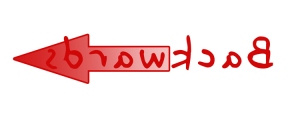 Thanks to Ridge Personal Trainer Desiree Dejongh for finding this article for us that reveals the reality of “backwards exercising.”
Thanks to Ridge Personal Trainer Desiree Dejongh for finding this article for us that reveals the reality of “backwards exercising.”
No Gain in Backward Exercise, Experts Say
By Liz Neporent
On a recent Monday night at the New York Sports Club on Wall Street, a woman was turned around on the stair climber and stepping backward. Nearby, several exercisers were striding on elliptical motion trainers, switching the direction of their leg movements from forward to reverse and back again every couple of minutes.
Both activities are common in gyms across the country and evidence of a growing trend: backward exercising.
Backward running has always attracted a small but fun-loving following, including participants in an annual backward mile run in Central Park on April Fool’s Day. But exercising in reverse has shifted into high gear because of the popularity of machines like elliptical trainers, stair climbers and Spinning bikes that allow exercisers to move backward and forward.
Despite the increased popularity of the reverse workout, fitness experts question whether exercising backward is safe and effective or just another fitness fad. Many suspect that it is the latter.
”Ask someone why they’re exercising backwards and they’ll usually tell you they’re trying to tone their butt and the backs of their legs,” said Ben Gelfand, a physical therapist and author of ”Return to Glory Days” (Simon & Schuster, 1997), a primer on athletic injuries. But computer analysis indicates that the quadriceps, muscles in the front of the thigh, are doing most of the work during backward stair climbing, walking and running, while the buttocks and the hamstrings in back of the thigh muscles are virtually idle.
”It’s also not great for the lower back because your posture and body alignment are thrown out of whack,” Mr. Gelfand said.
He said a better, safer way to tone the buttocks would be to go to the weight room and do strengthening exercises like lunges and leg presses, which target that area.
And, while a 1995 Texas Tech University study found that walking backward at a 16-minute-a-mile pace elicited higher heart rates and burned more calories than regular jogging at a faster pace, Edmund R. Burke, director of the exercise science program of the University of Colorado in Colorado Springs, warns that it is not a practical way to get in shape or lose weight. ”Since you don’t have eyes in back of your head it’s an awkward way to move,” Dr. Burke said.
